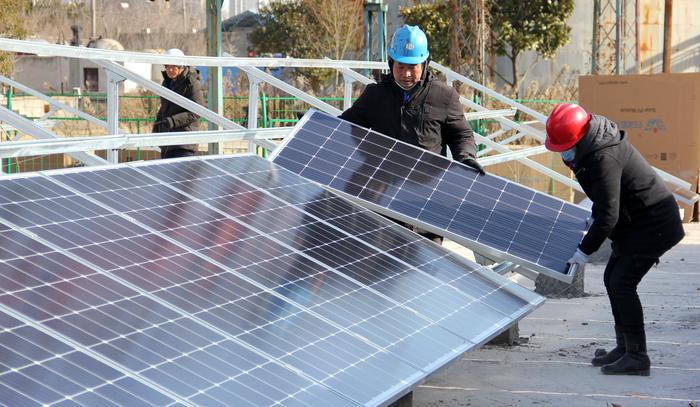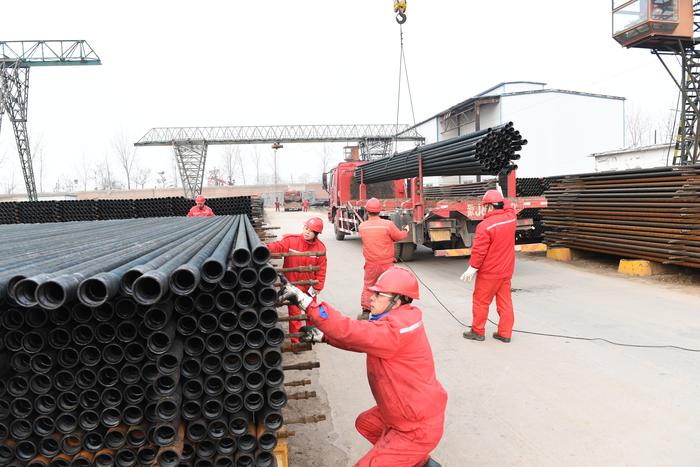|
| 2021-01-11 来源: 中国石化新闻网 |
| 石化新闻 |
中国石化新闻网讯 据今日油价1月5日报道,2020年的危机突然结束了美国原油产量的增长,要知道,在石油价格和需求随着新冠肺炎疫情的蔓延而暴跌之前,美国原油产量刚刚达到1300万桶/天。在2020年3月至5月期间,美国石油产量下降了250万桶/天,原因是石油公司为了应对低油价而削减了钻井支出和产量。2020年5月,美国石油产量达到1000万桶/天,这是自2017年末以来的最低月度水平。 在经历了5月份的低谷之后,美国的石油产量一直在逐步增长,因为生产商恢复了缩减的产量,油价也从2020年早些时候的损失中恢复了一部分,原因是有关疫苗的乐观消息,给市场带来了期待已久的石油需求复苏,终于指日可待的希望。 美国能源信息署(EIA)预计,美国石油产量还将维持在每天1100万桶左右,至少一年的时间。因为美国页岩区现有油井的产量下降速度将快于新钻井数量带来的产量增长速度。但一些分析人士表示,市场对美国页岩油的抛售速度太快了,2021年美国石油产量的反弹将会让市场感到惊讶。 有些人甚至认为EIA故意发布比现实更为悲观的预期,目的是“愚弄”欧佩克+继续从市场上截留大量石油,并将油价维持在每桶50美元左右的水平,这将有助于美国今年的产量跃升。 能源经济学家Philip K. Verleger表示,EIA低估了美国近几个月的原油产量,这将印证先锋能源首席执行管谢菲尔德(Scott sheffield)等石油公司高层的说法,即美国产量在今明两年内只会小幅增长。 Verleger能源咨询公司PKVerleger估计,美国2020年11月底的石油日产量为1240万桶,而EIA估计为1100万桶。 12月初,PKVerleger在一份报告中表示:“石油出口国被欺骗了,它们同意限制产量增长以支撑油价,这为美国石油产量的重新提振奠定了基础。” EIA在其最新的短期能源展望(STEO)中预计,美国原油产量将从2019年的1220万桶/天下降到2020年的1130万桶/天和2021年的1110万桶/天。据EIA估计,为应对油价上涨而增加的钻井活动将推动2021年12月的产量达到1140万桶/天。 达拉斯联邦储备银行第四季度能源调查显示,美国石油行业的前景在最近几个月有了显著改善。商业活动指数从第三季度的-6.6上升到第四季度的18.5。调查显示,这是自2019年第一季度以来,在勘探开发和油田服务公司的推动下,商业活动指数首次出现正值。此外,大多数勘探开发高管(72%)预计他们的公司将在未来12个月内从非银行渠道获得资金。 一位勘探与生产高管在达拉斯联储调查中表示:“勘探生产和供应商整合需要增加,以减少系统性的大量成本。” 研究公司布隆伯格麾下BloombergNEF (BNEF)在一份报告中称,在油价暴跌和需要调整以适应石油需求下降的压力下,美国石油生产商已大幅削减成本,并设法将过去一年的平均盈亏平衡成本降低近20%,至每桶45美元。 美国私人油田服务公司Canary的首席执行官丹•埃伯哈特在《福布斯》杂志上写道,成本下降可能会进一步推动今年美国页岩石油的反弹。 值得一提的是,并非所有人都对美国页岩行业持乐观态度,要知道,当前破产申请仍在增加,合并交易推迟了规模较小的项目的开发。美国的页岩油开发很难让产量回到1300万桶/天的水平。现在,特别是随着项目整合的发生,以及人们真正关注开发项目的全周期回报和净现值,经济形势将促使投资者放弃小规模项目的开发。 不过可以肯定的是,美国石油生产最糟糕的时期已经过去。然而,2021年和2022年页岩行业的命运将取决于资本、成本削减和支出约束,同时也取决于全球石油需求和欧佩克+政策对油价的支撑。 王佳晶 摘译自 今日油价 原文如下: Should Oil Markets Brace for A U.S. Shale Comeback? The 2020 crisis put an abrupt end to the growth in U.S. crude oil production, which had just hit 13 million barrels per day (bpd) before oil prices and demand collapsed with the spread of the pandemic. Between March and May 2020, U.S. oil production plunged by over 2.5 million bpd as companies slashed spending on drilling and curtailed output in response to the low oil prices. In May, U.S. oil production hit 10 million bpd—its lowest monthly level since late 2017. After the trough in May, oil output in the United States has been gradually growing as producers restore curtailed volumes and oil prices recover part of the losses from earlier in 2020, due to encouraging news about vaccines, which gave the market hopes that the long-awaited oil demand recovery was finally in sight. EIA estimates point to U.S. oil production staying at around 11 million bpd for at least another year, as production rates from existing wells in the U.S. shale patch will fall faster than production gains from fewer newly drilled wells. But some analysts say that the market has been too quick to write off U.S. shale again, and will be surprised by the rebound in American oil production in 2021. Some even suggest that the U.S. shale patch and the EIA are deliberately painting a gloomier picture than reality in order to ‘fool’ the OPEC+ alliance to continue withholding large volumes from the market and sustain oil prices at levels around $50 a barrel that would help U.S. production to jump this year. According to energy economist Philip K. Verleger, the EIA is under-reporting U.S. crude oil production in recent months, thus helping the narrative of some U.S. oil executives—such as Pioneer Resources’ chief executive Scott Sheffield—that American production will only see modest gains this year and next. Verleger’s energy consultancy PKVerleger estimates that U.S. oil production was 12.4 million bpd at the end of November, while the EIA has estimated it at 11 million bpd. “One might say EIA officials are deliberately underestimating the rise in US production to boost prices and facilitate hedging by US producers, thereby helping to strengthen and perpetuate the industry,” PKVerleger said in the ‘Fracking Comeback’ note in early December. “Oil-exporting countries have been fooled. Their agreement to limit output increases to support oil prices has laid the foundation for a renewed boost in US production. Once again, OPEC and other oil-exporting nations have wasted the gains of a price war,” the note says. In its latest Short-Term Energy Outlook (STEO), the EIA sees U.S. crude oil production declining on an average annual basis from 12.2 million bpd in 2019 to 11.3 million bpd in 2020 and 11.1 million bpd in 2021. Rising drilling activity in response to higher oil prices is set to push monthly output to 11.4 million in December 2021, according to EIA estimates. The outlook of the U.S. oil industry itself has considerably improved in recent months, the Dallas Fed Energy Survey for Q4 showed. The business activity index moved into positive territory, rising from -6.6 in Q3 to 18.5 in Q4. This was the first positive reading for the business activity index since the first quarter of 2019, with the increase driven by both E&P and oilfield services firms, according to the survey. Moreover, most E&P executives—72 percent—expect their firm will have access to capital from nonbank sources over the next 12 months. “E&P and supplier consolidation needs to increase to reduce substantial costs from the system,” one E&P executive said in the Dallas Fed survey. Pressured by plunging oil prices and the need to adjust to the lower oil demand, U.S. oil producers have slashed costs and managed to bring down their average breakeven costs over the past year by nearly 20 percent to $45 a barrel on average, BloombergNEF (BNEF) said in a report last month. Declining costs could additionally help the U.S. shale rebound this year, Dan Eberhart, chief executive at privately held U.S. oilfield services company Canary, writes in Forbes. “Don’t write off the great shale story just yet. The final chapter — maybe its best — is still being written,” Eberhart says. Not everyone is so optimistic about U.S. shale, with bankruptcy filings still rising and consolidation deferring smaller-scale developments. “It’s going to be hard for the shale development in the U.S. to get U.S. production back to 13 MMbd. Now, especially as consolidation occurs and as people really focus on full-cycle returns and net present value of their developments, the economics is going to drive a lot of decisions to not do these smaller-scale developments,” Occidental CEO Vicki Hollub told IHS Markit Vice Chairman Daniel Yergin in mid-November. The worst for U.S. oil production is over. Still, the fate of the shale patch in 2021 and 2022 will depend on access to capital, cost reductions, and spending discipline, as much as it will hinge on global oil demand and the OPEC+ policies to support oil prices. |








